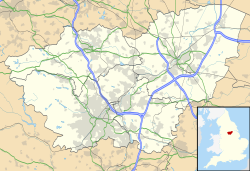This article has multiple issues. Please help improve it or discuss these issues on the talk page . (Learn how and when to remove these messages)
|
| Armthorpe | |
|---|---|
 St Leonard & St Mary’s Church | |
Location within South Yorkshire | |
| Population | 14,457 (2011 Census) [1] |
| OS grid reference | SE631047 |
| • London | 145 mi (233 km) SSE |
| Civil parish |
|
| Metropolitan borough | |
| Metropolitan county | |
| Region | |
| Country | England |
| Sovereign state | United Kingdom |
| Post town | DONCASTER |
| Postcode district | DN3 |
| Dialling code | 01302 |
| Police | South Yorkshire |
| Fire | South Yorkshire |
| Ambulance | Yorkshire |
| UK Parliament | |
Armthorpe is a large suburban village and civil parish in the City of Doncaster, South Yorkshire, England. Historically within the West Riding of Yorkshire, it had a population of 12,630, [3] increasing to 14,457 at the 2011 Census. [1]




